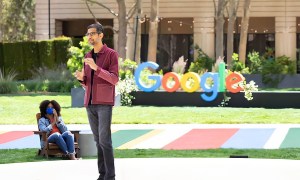

Google wants to make it a little easier for users and families to manage how much time they spend on their phone. During Google’s annual developer’s conference, Google I/O, CEO Sundar Pichai put a heavy emphasis on the theme of responsibility in technology.
So what does it mean to take responsibility in technology? Well, Google is rolling out new features to help users remain more mindful of the time they spend on their devices.
Dashboard, a feature for Android devices, helps you monitor the amount of time you spend completing different tasks on your phone. Google will break down your screen time usage by activity and even suggest screen breaks in certain apps like YouTube. These features will be rolled out on the newest iteration of Android, called Android P.

Dashboard isn’t the only new feature though — awareness about how much time you spend on your phone is only one piece of the puzzle. Google will also let you set timers for each app on your phone, and will alert you when the time is up. On the home screen, that app will then be grayed out for the rest of the day, though of course you can still use it if you choose.
Google also wants to make notifications a little less distracting. Now, when you set your phone to Do Not Disturb mode, not only will it silence audio notifications and buzzes, but you’ll also be able to tell it not to deliver visual notifications that might pop up when your phone is on the dinner table, for example. You can also automatically turn Do Not Disturb mode on when you put your phone face down on the table.
Next up is Wind Down mode, which fades the display on your phone to grayscale when it’s about time to go to bed. It should serve as a reminder to users that they should be heading to bed, instead of spending hours on their phone.
Google already dipped its toe into helping families manage screen time through its Family Link suite of apps. Specifically, the tools are targeted at parents who want to ensure that their kids aren’t spending too much time on their phones. Google also added features in apps such as YouTube Kids, which allows parents to set how much time their kids can spend using the app, as well as the types of content that kids can watch.

